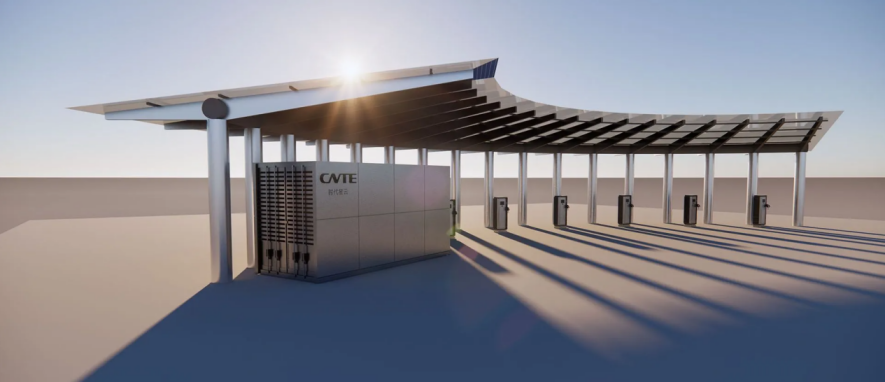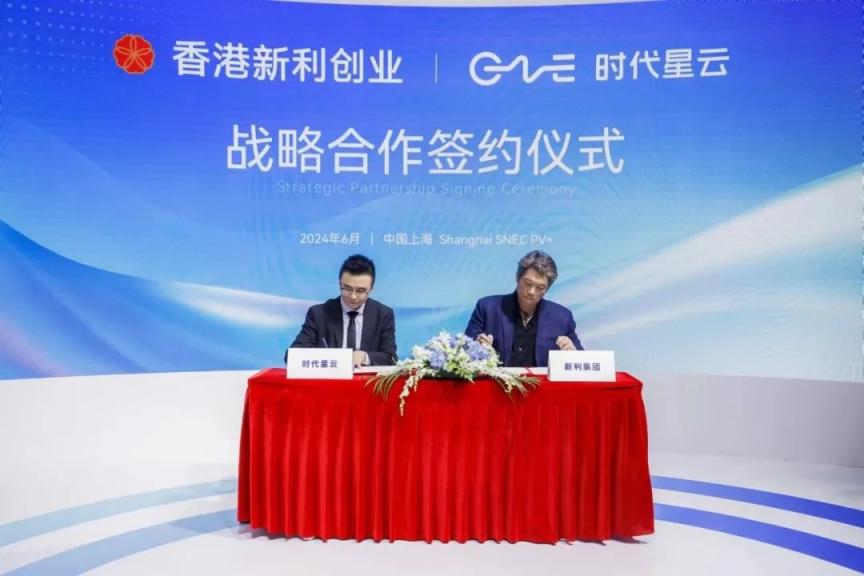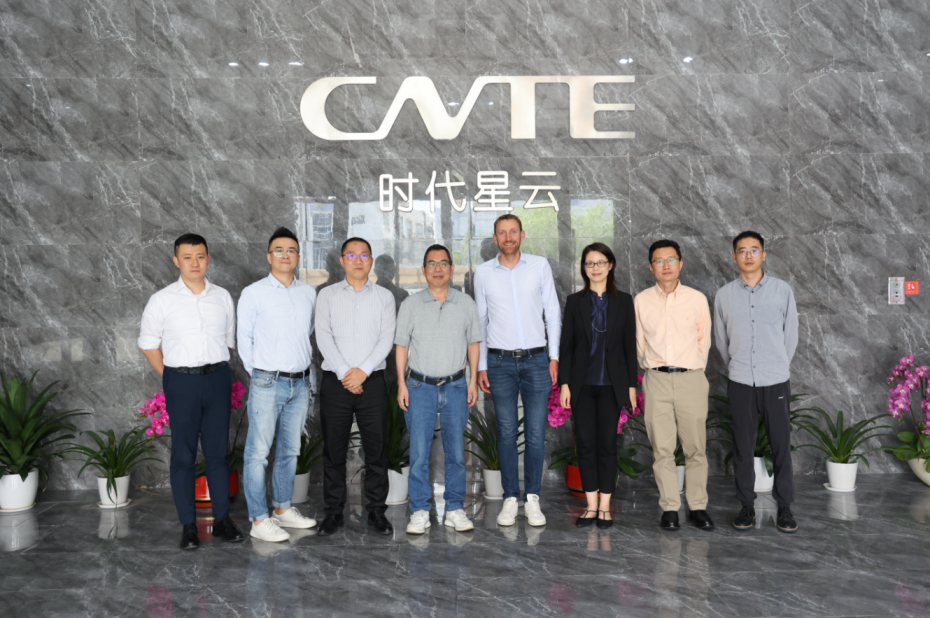Strategies for Implementing BESS Container in Various Industries
In the sphere of sustainable energy solutions, Battery Energy Storage Systems (BESS) assume a central role. These units, enriched with cutting-edge technology, act as vital repositories of power, offering adaptability and efficacy to contemporary energy networks. A recent stride in this domain is the incorporation of smart charging capabilities within BESS containers. This piece explores the essence, constituents, advantages, and technological strides linked with Smart Charging BESS Containers, spotlighting the contributions of CNTE, a prominent manufacturer in the sector.
Definition and Purpose of BESS Containers
1. BESS Containers: BESS containers are compact units designed to store electrical energy for later use. They are essential components of renewable energy systems, allowing for the efficient management and distribution of power generated from intermittent sources such as solar and wind.
2. Purpose: The primary purpose of BESS containers is to store excess energy during periods of low demand and release it when demand is high. This helps balance the supply-demand dynamics of the grid, reducing the need for fossil fuel-based backup power plants and enhancing overall system reliability.
Importance of Smart Charging in Energy Storage Systems
1. Efficiency Enhancement: Smart charging refers to the intelligent management of charging and discharging processes based on real-time data and predictive algorithms. By optimizing these operations, smart charging significantly enhances the efficiency of BESS containers, minimizing energy losses and maximizing the utilization of stored power.
2. Reliability Improvement: Smart charging also contributes to the reliability of energy storage systems by ensuring optimal battery performance and health. Through precise control and monitoring, it helps prevent overcharging, undercharging, and other factors that can degrade battery lifespan and compromise system reliability.
Components of Smart Charging BESS Container
1. Key Components: Smart Charging BESS Containers comprise several essential components, including batteries, smart charging controllers, battery management systems (BMS), and communication systems.
2. Smart Charging Controllers: These devices serve as the brain of the system, orchestrating the charging and discharging processes based on input from sensors and external factors such as energy prices and grid conditions.
3. Battery Management Systems (BMS): BMS plays a crucial role in ensuring the safety and performance of the battery cells. It monitors parameters such as temperature, voltage, and state of charge, taking corrective actions to prevent issues like thermal runaway and over-discharge.
4. Communication Systems: Effective communication systems enable seamless integration with the grid and other energy assets, facilitating real-time data exchange and coordination for optimal operation.

Benefits of Smart Charging BESS Container
1. Increased Energy Efficiency: Smart charging algorithms optimize energy flow, reducing wastage and improving overall efficiency. This leads to lower operational costs and a more sustainable energy ecosystem.
2. Extended Battery Lifespan: By avoiding detrimental charging practices, such as deep discharges and overcharging, smart charging helps extend the lifespan of battery cells, reducing replacement frequency and total cost of ownership.
3. Enhanced Grid Stability: Smart Charging BESS Containers contribute to grid stability by providing fast-response energy storage capabilities. They can rapidly inject or absorb power to mitigate fluctuations caused by renewable energy variability or unexpected demand spikes.
4. Cost Savings: Through features like peak shaving and demand response, smart charging BESS containers enable users to optimize energy consumption patterns and reduce peak demand charges, resulting in substantial cost savings over time.
The World’s Leading R&D Team at CNTE
1. Battery Testing Technology: CNTE’s cutting-edge battery testing technology ensures the reliability and performance of BESS containers by accurately assessing parameters such as internal resistance and capacity retention rate.
2. Electronic and Power Technology: With a focus on continuous innovation, CNTE delivers high-power DC charging and discharging systems that meet the diverse needs of energy storage applications.
3. Intelligent Data Technology: CNTE leverages cloud-based data tracking and AI algorithms to enhance the intelligence and analytics capabilities of smart charging BESS containers, enabling predictive maintenance and optimization.
4. Battery Integration Technology: Safety is paramount in energy storage systems, and CNTE excels in designing and implementing robust safety features, including advanced thermal management and fire protection measures.
5. Energy Management Technology: CNTE’s AI-driven energy management solutions enable sophisticated functionalities such as peak shaving, PV forecasting, and load forecasting, ensuring optimal performance and efficiency in diverse operating conditions.
Different Smart Charging Algorithms for BESS Containers
1. Time-based Charging Algorithms: Time-based algorithms schedule charging and discharging operations based on predefined time intervals or pricing schedules. By leveraging off-peak hours for charging and discharging during peak demand periods, these algorithms help reduce electricity costs and alleviate strain on the grid.
2. Demand-based Charging Algorithms: Demand-based algorithms dynamically adjust charging and discharging rates in response to real-time changes in energy demand. By prioritizing energy storage during low-demand periods and releasing power during peak demand, these algorithms contribute to grid stability and reliability.
3. Frequency Regulation Algorithms: Frequency regulation algorithms monitor grid frequency and adjust BESS operations to maintain stability. They enable rapid response to frequency fluctuations, supporting the integration of renewable energy sources and enhancing overall grid resilience.
4. Peak Shaving Algorithms: Peak shaving algorithms aim to reduce peak demand by strategically discharging energy during periods of high demand. By smoothing out demand spikes, these algorithms help utilities avoid costly infrastructure upgrades and optimize energy utilization.
Case Studies: Deployments and Success Stories
One notable example of smart charging BESS containers in action is the Guangdong Shunde Industrial and Commercial Energy Storage Project, implemented by CNTE. With a scale of 1MW/1.7MWh, this project serves the dual purpose of providing an emergency power supply for factories while optimizing electricity costs.
Guangdong Shunde Industrial and Commercial Energy Storage Project
1. Project Scale: The project boasts a capacity of 1MW/1.7MWh, ensuring ample power supply for critical operations during emergencies.
2. Customer Demand: The primary goal of the project is to provide emergency power supply for factories while also reducing electricity costs through efficient energy management.
3. Service Overview: Situated in Midea Group’s Guangdong Shunde factory, the energy storage system comprises two 500kW PCSs and eight 213kWh battery cabinets. Paired with a photovoltaic power generation system, it maximizes the utilization of green power, leading to substantial electricity expense savings.
Challenges and Future Trends in Smart Charging BESS Containers
1. Identification of Challenges: Implementing smart charging technology for BESS containers poses several challenges, including regulatory hurdles, technical complexities, and interoperability issues. Addressing these challenges is crucial for widespread adoption and scalability.
2. Regulatory and Technical Barriers: Regulatory frameworks vary across regions, hindering standardization and interoperability. Technical challenges related to battery performance, system integration, and data management also need to be addressed to unlock the full potential of smart charging BESS containers.
3. Emerging Trends: Emerging trends such as AI-driven optimization, blockchain integration, and interoperability standards hold promise for further enhancing the capabilities of smart charging BESS containers. By leveraging these trends, stakeholders can overcome existing barriers and drive innovation in the energy storage sector.
4. Predictions for the Future: Looking ahead, smart charging BESS containers are poised to play a pivotal role in the energy transition. As technology advances and regulatory frameworks evolve, these containers will become integral components of resilient, sustainable energy systems, driving efficiency, reliability, and cost savings.
Conclusion
In conclusion, Smart Charging BESS Containers represent a significant advancement in energy storage technology, offering increased efficiency, reliability, and cost-effectiveness. With CNTE at the forefront of innovation, these systems are poised to play a vital role in shaping the future of sustainable energy solutions worldwide.
Get In Touch
Recent Posts
-

CNTE’s 90th Smart BESS EV Charging Station in operation in Shanghai
Jul 15, 2024 -

CNTE New Smart BESS EV Charging Station Landed in Shanghai
Jul 10, 2024 -

CNTE strategic signing at SNEC 2024 Shanghai
Jul 10, 2024 -

BP Group Co-operation Visit to CNTE
Jul 10, 2024 -

CNTE C&I ESS lands in Czech Industrial Park
Jul 10, 2024
